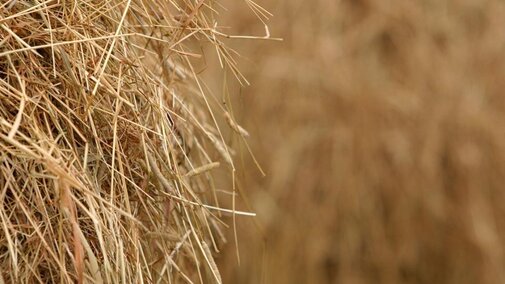Kernel Processing For Quality Corn Silage
Assessing the quality of chop as the harvest comes in can mean the difference between quality silage and a subpar harvest. Are you prepared for silage harvest?
Energy from corn silage comes in a large part from starch in the grain itself. After consuming however, the outer seed coat impedes starch digestion. To counteract this, many modern choppers are fitted with a kernel processer that physically crushes or damages the grain and stalks, improving digestibility. Correctly setting these rollers is critical — too close and we have excess wear on the machine, too far apart and kernels aren’t broken and digestibility is decreased.
If not properly set, we need to catch the problem as soon as possible. To do this, grab a 32 oz. cup and at least once an hour during harvest, grab a sample from the pile.
Next, spread the sample out on a flat surface like a card table near the pile and go through the kernels. Count all the kernels that are half or greater in size. You can also put the sample into a bucket of water. The kernels will sink to the bottom and stalks and leaves will float. Skim/drain off the top layer and again count any kernels that are half or greater in size.
For both methods, the goal is to have two or fewer whole or half-size kernels in your count. Anything over that and word can be passed to the chopper to adjust the processing.
For those who don’t have access to a kernel processer, keeping chop length short can help accomplish similar results. Shortening chop length to 3/8 inch for machines without a processor will do more kernel damage and maintain similar fiber particles. For those who don’t have to worry about particle size — mostly our beef producers — dropping down to a half inch will damage even more kernels and provide the additional benefit of getting a good pack.
Storage Methods to Reduce Hay Losses
Hay is a very valuable commodity this year. So, as you bring in your round bales for winter storage and feeding, store them to minimize weather losses.
Hay stored outside will be damaged by rain, snow, wind and ice this fall and winter. The average round bale may lose up to 1/4 of its original nutrients during storage, but these losses can be reduced to less than 10% or so.
For instance, do you usually line up bales for easy access so the twine sides touch each other? Or do you stack your bales? If so, extra spoilage will occur where these bales touch because rain, snow and ice will gather in spots where bales touch instead of running off. Research has shown that round bales stacked in a pyramid form will have greater dry matter losses compared bales butted end-to-end, cigar-like.
Does snow drift around your bales? Bales placed in east-west rows often have drifts on the south side. Hay next to fencelines or trees can get extra snow. As snow melts it soaks into bales or makes the ground muddy. Plus, the north side never gets any sun so it's slow to dry. This year, line your bales up north-and-south for fewer drifts and faster drying as sunlight and prevailing winds hit both sides of the row.
Most important is the bottom of your bales. Always put bales on higher, well-drained ground so water drains away from them. If necessary, use crushed rock or other materials to elevate bales to keep the bottoms dry. This also will reduce problems getting to your hay or getting it moved due to snow drifts or mud.
So, for outside storage, a single row of bales end to end, along with consideration for row orientation and the ground surface drainage, will be the best storage method.
Delayed Hay Harvest
Weather this year has been quite the rollercoaster, resulting in many producers dealing with adverse conditions when harvesting and putting hay up. Do you know the impact these conditions will have on the final product?
For some producers, too much moisture has been causing issues. Wet meadows where harvest has been delayed are dealing with prairie hay that is past its prime. As plants mature, quality drops, so expect this hay to be at least a bit lower quality than normal.
In other parts of the state, too little rain led to brome fields that weren’t even worth an early harvest. With some precipitation returning, these fields are coming back and may be recovered for a fall harvest. This is a complicated topic, so check out the latest BeefWatch for an article with full considerations. However, ensuring that stands are fully recovered is critical before deciding to cut. Additionally, plants that were unable to fully mature earlier may try producing seed late, leading to lower quality than we normally see in fall brome growth.
All producers may have dealt with uncertain forecasts, making the decision to drop hay difficult or raining on cut fields. Remember the more hay is worked, especially for alfalfa, the more leaf shatter occurs and the lower quality we end up with. With low hay stores from last year, getting a bit more growth and delaying cutting may be the best option, especially if hay quality will end up being equally low if harvested earlier and raked several times to dry. Especially wet hay that needs to be removed may be better off wrapped and used for baleage than deal with the fire risk, mold growth and declining quality that occurs when hay is put up too wet.

